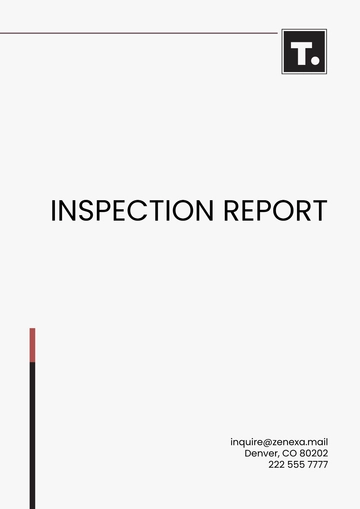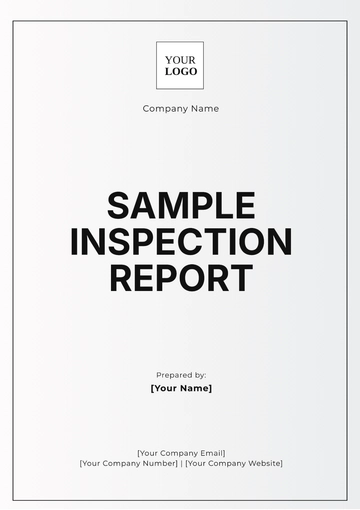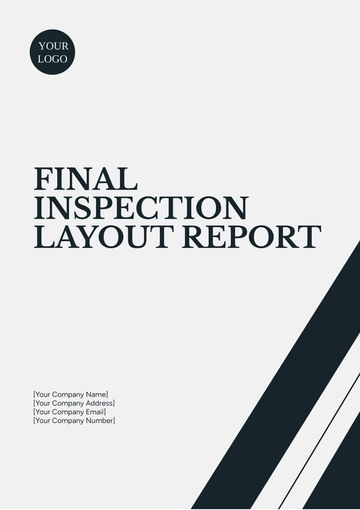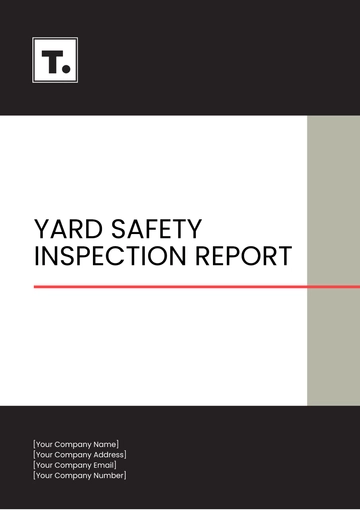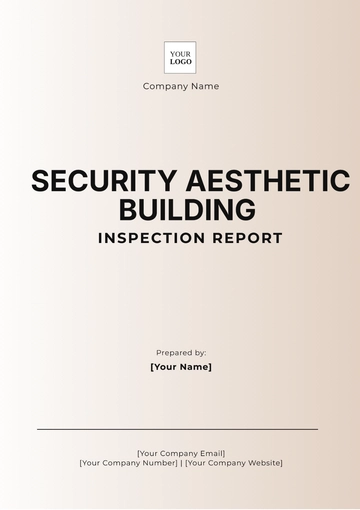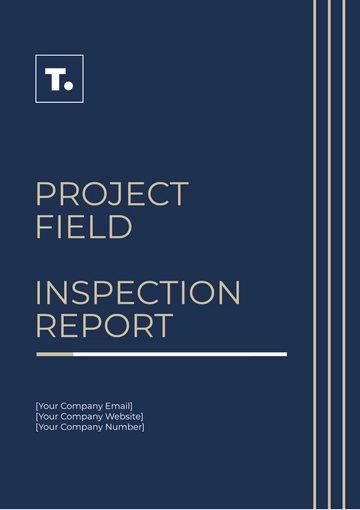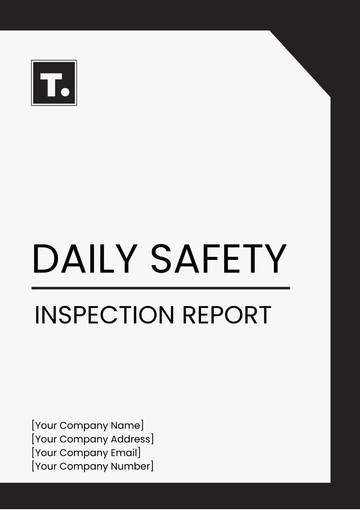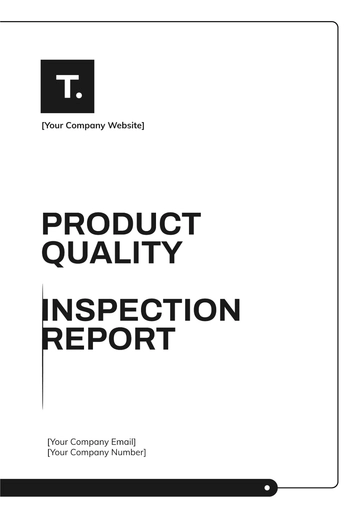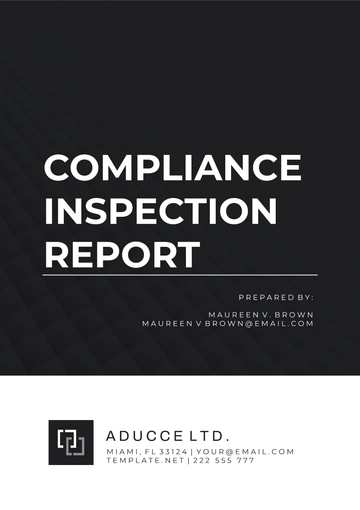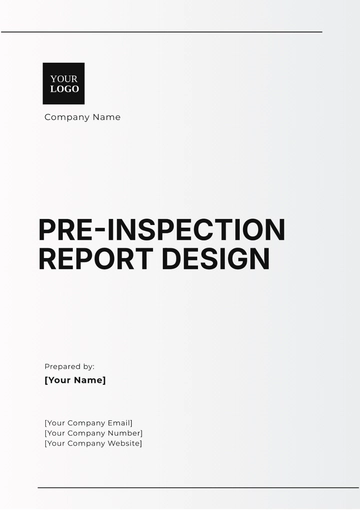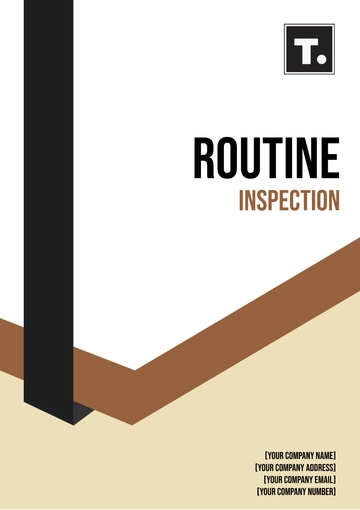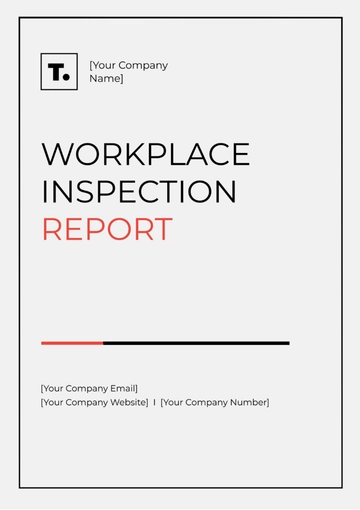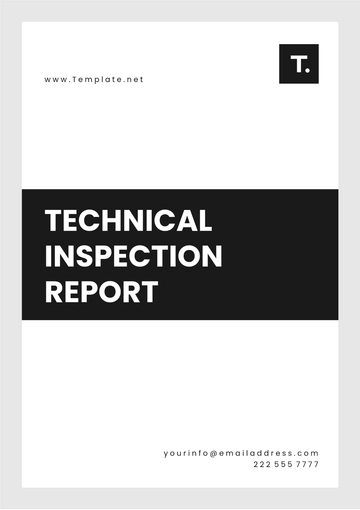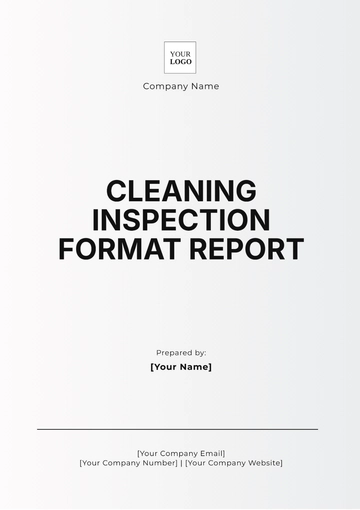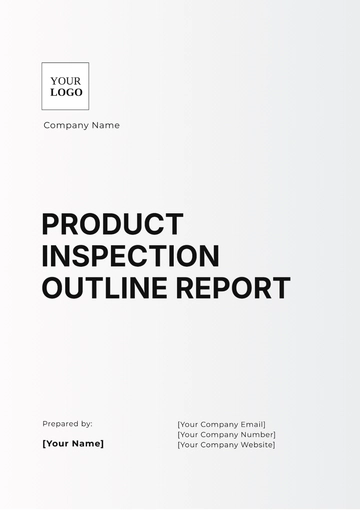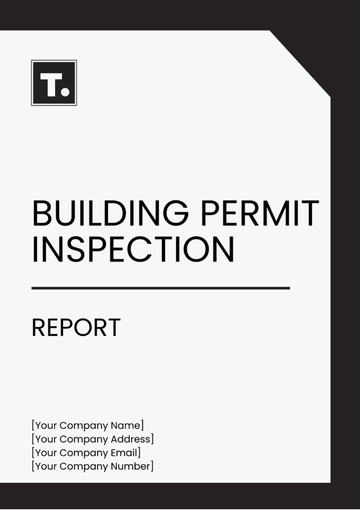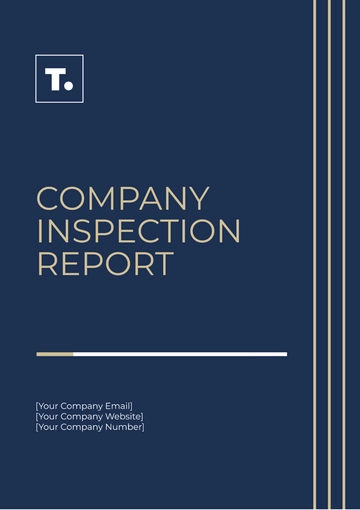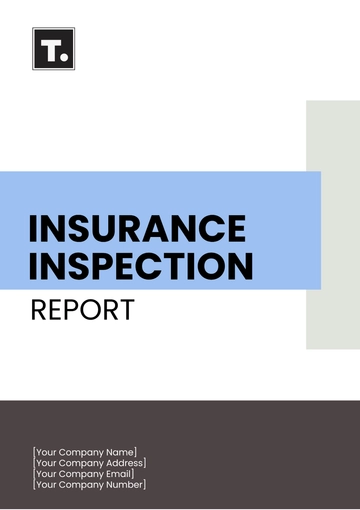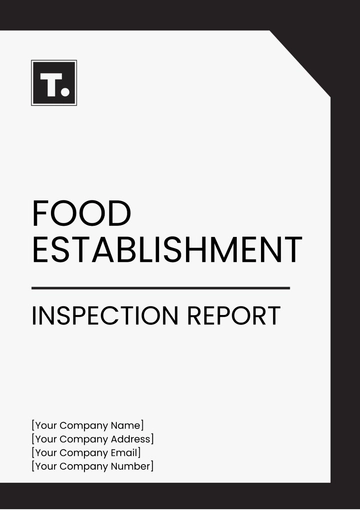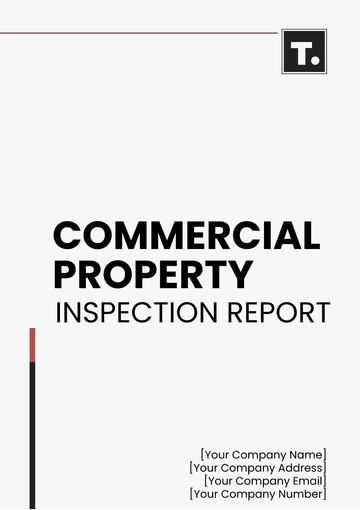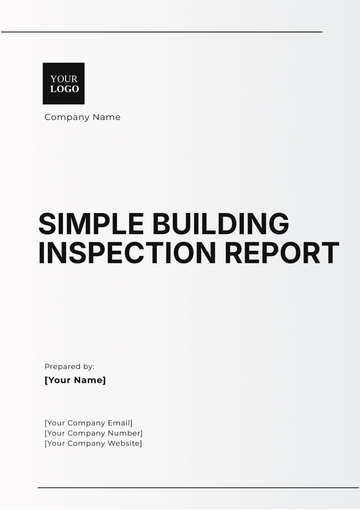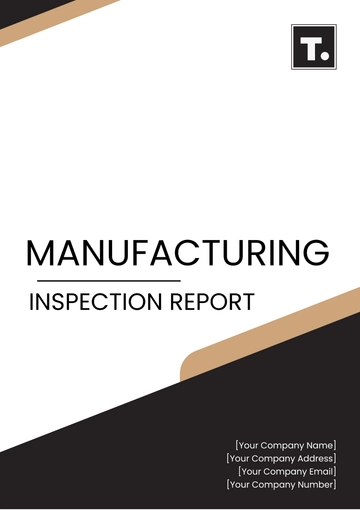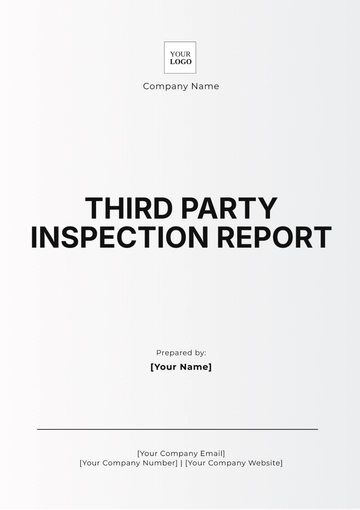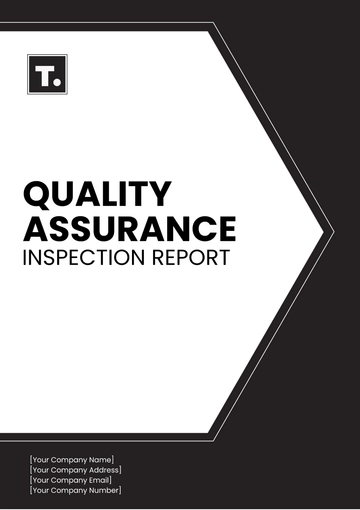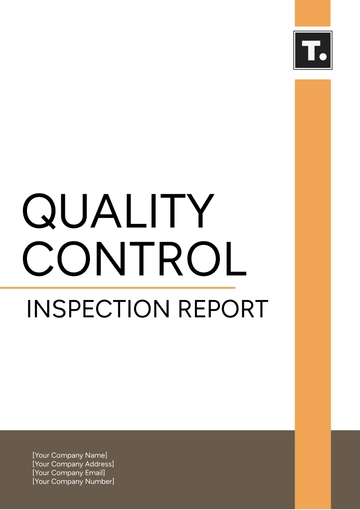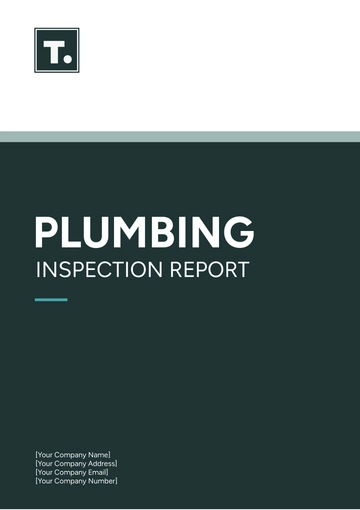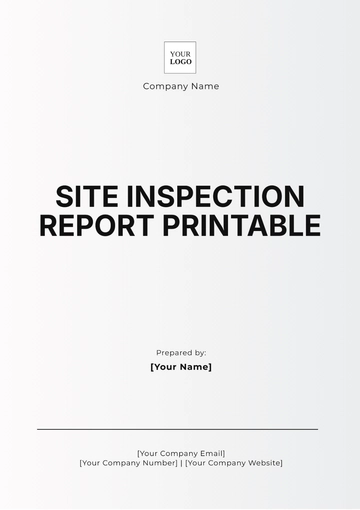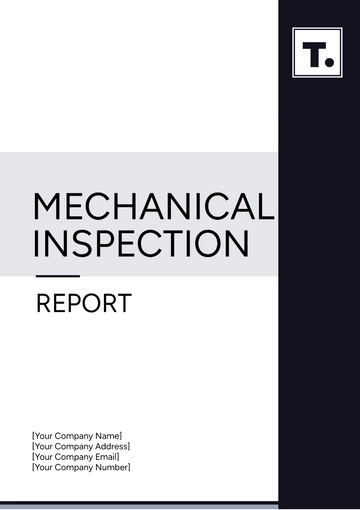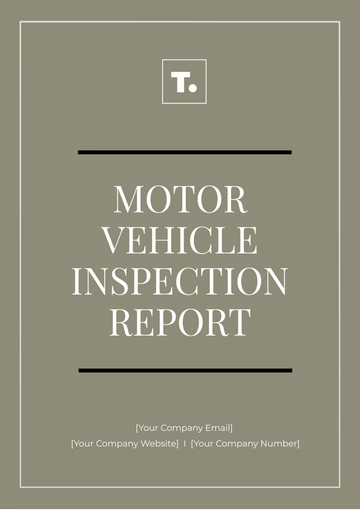Free Product Inspection Outline Report
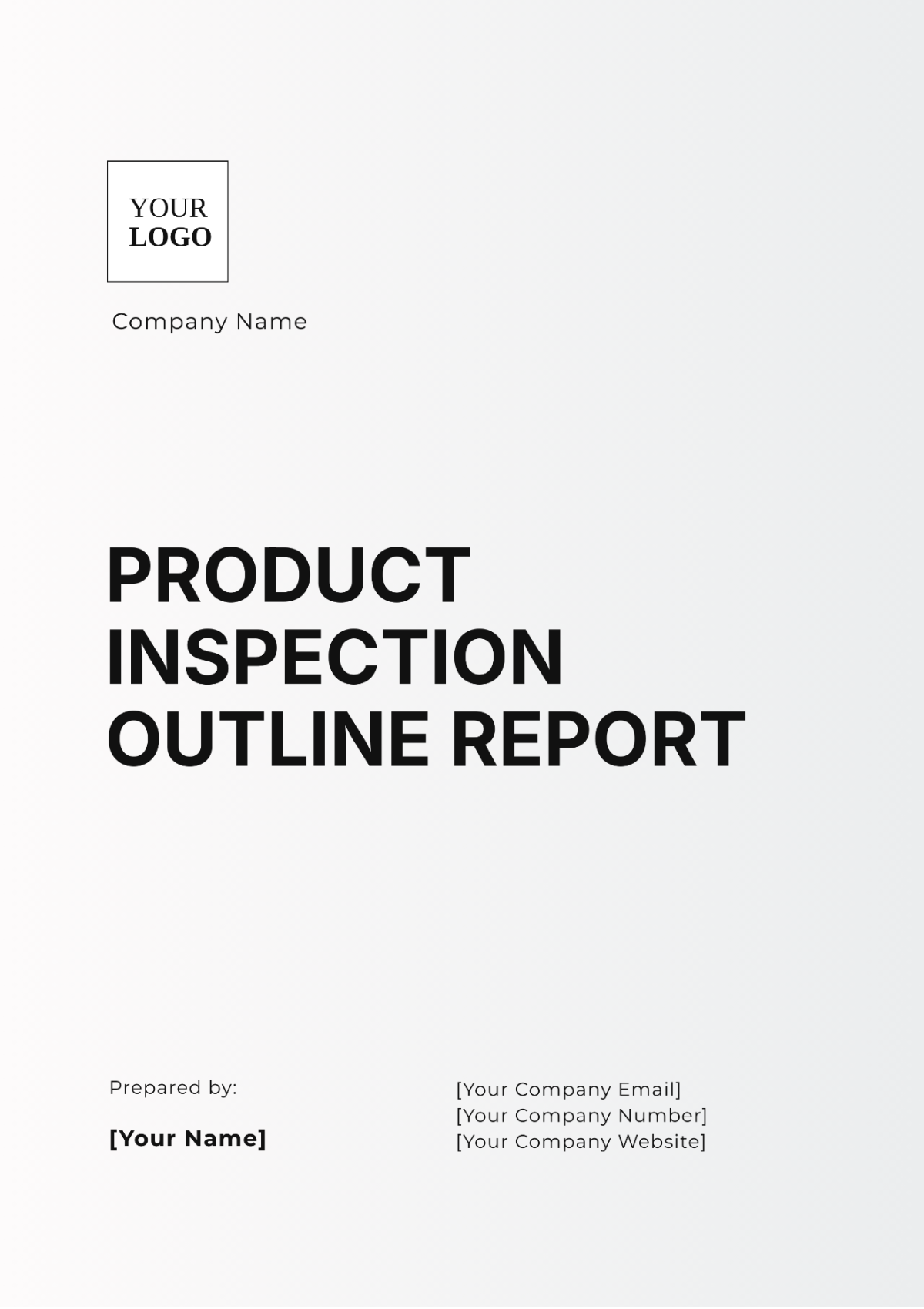
1. Executive Summary
This Product Inspection Outline Report provides a comprehensive overview of the inspection process, findings, and conclusions based on the examination of the products. The primary goal of this inspection is to ensure that the products meet specified quality standards and regulatory requirements.
2. Inspection Objectives
The objectives of this inspection are:
To verify the compliance of the products with the established standards.
To identify any defects or non-conformities.
To assess the overall quality of the products.
3. Methodology
3.1 Inspection Procedures
The inspection was conducted using the following procedures:
Visual Examination: A detailed visual inspection of each product.
Measurement: Dimensional checks using calibrated tools.
Functional Testing: Performance testing under specified conditions.
3.2 Tools and Equipment Used
The following tools and equipment were used during the inspection:
Tool/Equipment | Description | Purpose |
|---|---|---|
Calipers | Precision measuring instrument | To measure dimensions |
Microscope | High-magnification optical device | To inspect surface details |
Testing Bench | Specialized setup for testing | To conduct functional tests |
4. Findings
4.1 Compliance Overview
The majority of the inspected products were found to be in compliance with the standards. However, a few units exhibited minor non-conformities, which are detailed below.
4.2 Defects Identified
The following defects were identified during the inspection:
Surface scratches on 5% of the units.
Dimensional deviations in 2% of the units.
Functional failure in 1% of the units.
5. Conclusion
Based on the inspection, it can be concluded that the overall quality of the products is satisfactory. The identified defects are within acceptable limits and can be addressed through minor adjustments in the production process.
6. Recommendations
6.1 Corrective Actions
The following corrective actions are recommended:
Implement additional quality checks to identify surface defects early.
Adjust the manufacturing process to ensure dimensional accuracy.
Enhance the testing procedures to detect functional issues effectively.
6.2 Future Inspections
Regular inspections should be scheduled to continually monitor product quality and ensure ongoing compliance with standards.
- 100% Customizable, free editor
- Access 1 Million+ Templates, photo’s & graphics
- Download or share as a template
- Click and replace photos, graphics, text, backgrounds
- Resize, crop, AI write & more
- Access advanced editor
The Product Inspection Outline Report Template offered by Template.net is a customizable and printable solution designed to streamline your inspection reporting process. This downloadable template is fully editable in our AI Editor Tool, allowing you to tailor it to your specific needs with ease. Save time and ensure consistency in your reports with this professional template, perfect for businesses of all sizes.
You may also like
- Sales Report
- Daily Report
- Project Report
- Business Report
- Weekly Report
- Incident Report
- Annual Report
- Report Layout
- Report Design
- Progress Report
- Marketing Report
- Company Report
- Monthly Report
- Audit Report
- Status Report
- School Report
- Reports Hr
- Management Report
- Project Status Report
- Handover Report
- Health And Safety Report
- Restaurant Report
- Construction Report
- Research Report
- Evaluation Report
- Investigation Report
- Employee Report
- Advertising Report
- Weekly Status Report
- Project Management Report
- Finance Report
- Service Report
- Technical Report
- Meeting Report
- Quarterly Report
- Inspection Report
- Medical Report
- Test Report
- Summary Report
- Inventory Report
- Valuation Report
- Operations Report
- Payroll Report
- Training Report
- Job Report
- Case Report
- Performance Report
- Board Report
- Internal Audit Report
- Student Report
- Monthly Management Report
- Small Business Report
- Accident Report
- Call Center Report
- Activity Report
- IT and Software Report
- Internship Report
- Visit Report
- Product Report
- Book Report
- Property Report
- Recruitment Report
- University Report
- Event Report
- SEO Report
- Conference Report
- Narrative Report
- Nursing Home Report
- Preschool Report
- Call Report
- Customer Report
- Employee Incident Report
- Accomplishment Report
- Social Media Report
- Work From Home Report
- Security Report
- Damage Report
- Quality Report
- Internal Report
- Nurse Report
- Real Estate Report
- Hotel Report
- Equipment Report
- Credit Report
- Field Report
- Non Profit Report
- Maintenance Report
- News Report
- Survey Report
- Executive Report
- Law Firm Report
- Advertising Agency Report
- Interior Design Report
- Travel Agency Report
- Stock Report
- Salon Report
- Bug Report
- Workplace Report
- Action Report
- Investor Report
- Cleaning Services Report
- Consulting Report
- Freelancer Report
- Site Visit Report
- Trip Report
- Classroom Observation Report
- Vehicle Report
- Final Report
- Software Report
